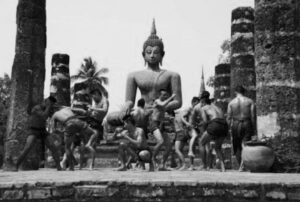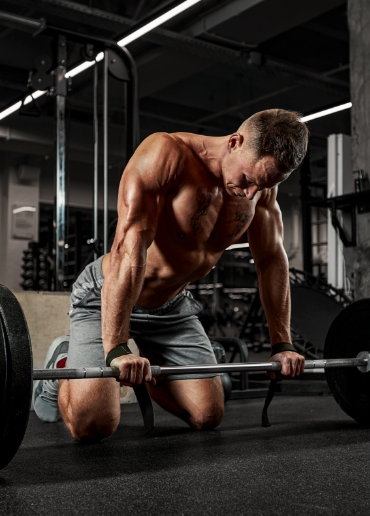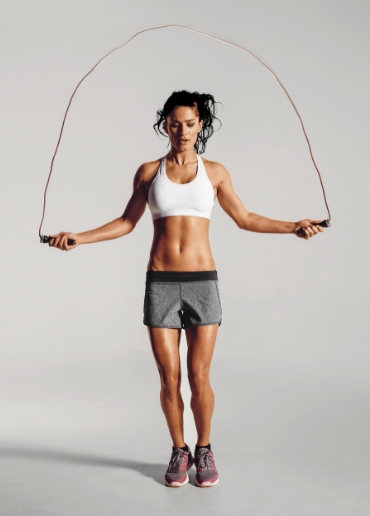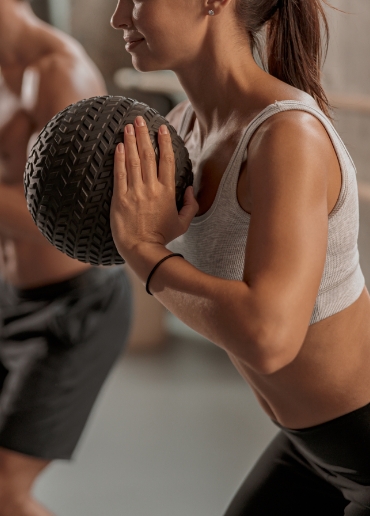No products in the cart.
About Muay Thai
Muay Thai
(Thai: มวยไทย, RTGS: muai thai,), sometimes referred to as Thai boxing, is a combat sport that uses stand-up striking, sweeps, and various clinching techniques. This discipline is known as the “Art of eight limbs”, as it is characterised by the combined use of fists, elbows, knees and shins. Muay Thai became widespread internationally in the late 20th to 21st century, when Westernised practitioners from Thailand began competing in kickboxing and mixed-rules matches as well as matches under Muay Thai rules around the world. The professional league is governed by The Professional Boxing Association of Thailand (P.A.T.), sanctioned by The Sports Authority of Thailand (S.A.T.).
Muay Thai is related to other martial art styles such as Muay Chaiya, Muay Boran, Muay Lao, Lethwei, Benjang and Tomoi. A practitioner of Muay Thai is known as a Nak Muay. Western practitioners in Thailand are sometimes called Nak Muay Farang, meaning “foreign boxer”.
History
 The origin of Muay Thai is subject to scholarly debates. Some believe that Muay Thai ultimately originated from the Khmer pre-Angkorean martial art Bokator, while others maintain it originated in Thailand. Muay Thai is believed to have been developed by the Siamese army as a form of self-defence and it can be traced at least to the 16th century as a peace-time martial art practised by the soldiers of King Naresuan. An exhibition of Muay Thai was observed and reported by Simon de la Loubère, a French diplomat who was sent by King Louis XIV to the Kingdom of Siam in 1687, in his famous work and the Ayutthaya Kingdom Burmese–Siamese War (1765–1767). Muay Boran and therefore Muay Thai, was originally called by more generic names such as Toi Muay or simply Muay. As well as being a practical fighting technique for use in actual warfare, Muay became a sport in which the opponents fought in front of spectators who went to watch for entertainment. These Muay contests gradually became an integral part of local festivals and celebrations, especially those held at temples. Eventually, the previously bare-fisted fighters started wearing lengths of hemp rope around their hands and forearms. This type of match was called Muay Khat Chueak (มวยคาดเชือก).
The origin of Muay Thai is subject to scholarly debates. Some believe that Muay Thai ultimately originated from the Khmer pre-Angkorean martial art Bokator, while others maintain it originated in Thailand. Muay Thai is believed to have been developed by the Siamese army as a form of self-defence and it can be traced at least to the 16th century as a peace-time martial art practised by the soldiers of King Naresuan. An exhibition of Muay Thai was observed and reported by Simon de la Loubère, a French diplomat who was sent by King Louis XIV to the Kingdom of Siam in 1687, in his famous work and the Ayutthaya Kingdom Burmese–Siamese War (1765–1767). Muay Boran and therefore Muay Thai, was originally called by more generic names such as Toi Muay or simply Muay. As well as being a practical fighting technique for use in actual warfare, Muay became a sport in which the opponents fought in front of spectators who went to watch for entertainment. These Muay contests gradually became an integral part of local festivals and celebrations, especially those held at temples. Eventually, the previously bare-fisted fighters started wearing lengths of hemp rope around their hands and forearms. This type of match was called Muay Khat Chueak (มวยคาดเชือก).
19th century
The ascension of King Chulalongkorn (Rama V) to the throne in 1868 ushered in a golden age not only for Muay but for the whole country of Thailand. Muay progressed greatly during the reign of Rama V as a direct result of the king’s personal interest in the sport. The country was at peace and Muay functioned as a means of physical exercise, self-defense, attacking, recreation and personal advancement.
The modern era
1909–1910: King Chulalongkorn formalized Muay Boran (“Ancient Boxing”) by awarding (in 1910) three Muen to victors at the funeral fights for his son (in 1909). The region style: Lopburi, Korat and Chaiya.
1913: British boxing was introduced into the curriculum of the Suan Kulap College. The first descriptive use of the term “Muay Thai”.
1919: British boxing and Muay Thai were taught as one sport in the curriculum of the Suan Kulap College. Judo was also offered.
1921: First permanent ring in Siam at Suan Kulap College. Used for both muay and British boxing.
1923: Suan Sanuk Stadium. First international style three-rope ring with red and blue padded corners, near Lumpinee Park. Muay and British boxing.
King Rama VII (r. 1925–1935) pushed for codified rules for Muay and they were put into place. Thailand’s first boxing ring was built in 1921 at Suan Kulap. Referees were introduced and rounds were now timed by kick. Fighters at the Lumpinee Boxing Stadium began wearing modern gloves, as well as hard groin protectors, during training and in boxing matches against foreigners. Traditional rope-binding (Khat Chueak) made the hands a hardened, dangerous striking tool. The use of knots in the rope over the knuckles made the strikes more abrasive and damaging for the opponent while protecting the hands of the fighter. This rope-binding was still used in fights between Thais but after a death in the ring, it was decided that fighters should wear gloves and cotton coverlets over the feet and ankles. It was also around this time that the term “Muay Thai” became commonly used, while the older form of the style came to be known as “Muay Boran”, which is now performed primarily as an exhibition art form.
 Muay Thai was at the height of its popularity in the 1980s and 1990s. Top fighters commanded purses of up to 200,000 Baht and the stadia where gambling was legal drew big gates and big advertising revenues. In 2016, a payout to a superstar fighter was about 100,000Bbaht per fight, but can range as high as 540,000 Baht for a bout.
Muay Thai was at the height of its popularity in the 1980s and 1990s. Top fighters commanded purses of up to 200,000 Baht and the stadia where gambling was legal drew big gates and big advertising revenues. In 2016, a payout to a superstar fighter was about 100,000Bbaht per fight, but can range as high as 540,000 Baht for a bout.
In 1993, the International Federation of Muay Thai Amateur, or IFMA was inaugurated. It became the governing body of amateur Muay Thai consisting of 128 member countries worldwide and is recognised by the Olympic Council of Asia.
In 1995, the World Muaythai Council, the oldest and largest professional sanctioning organisations of muay Thai, was established by the Thai government and sanctioned by the Sports Authority of Thailand.
In 1995, the World Muay Thai Federation was founded by the merger of two existing organisations, and established in Bangkok, becoming the federation governing international Muay Thai. In August 2012, it had over 70 member countries. Its president is elected at the World Muay Thai Congress.
In 2006, Muay Thai was included in SportAccord with IFMA. One of the requirements of SportAccord was that no sport can have a name of a country in its name. As a result, an amendment was made in the IFMA constitution to change the name of the sport from “Muay Thai” to “Muaythai” – written as one word in accordance with Olympic requirements.
Thai Fight in 2012
In 2014, Muay Thai was included in the International World Games Association (IWGA) and was represented in the official programme of The World Games 2017 in Wrocław, Poland.
In January 2015, Muay Thai was granted the patronage of the International University Sports Federation (FISU) and, from 16 to 23 March 2015, the first University World Muaythai Cup was held in Bangkok.
In 2020, there are more than 3,800 Thai boxing gyms overseas.
Rules
According to IFMA rules, Muay Thai is a full contact martial art that uses the fists, elbows, knees and feet to strike an opponent. For a strike to count as a point score, it has to connect without being blocked by your opponent. Strikes do not score if they connect with your opponent’s glove, forearm, shin or foot. Strikes to the groin were allowed in Muay Thai boxing until the late 1980s, and are still permitted in Thailand itself, and in club or competition events that abide to the traditional rules. While competitors do wear groin protection, such as cups, the rules for club level sparring and competition events may vary regarding the protective gear that may or may not be worn. Mixed-sex fights are not practiced at international level, but do occur in club and inter-club sparring and competition events. If the fight goes the distance and both fighters finish with the same score, then the winner is determined by which fighter landed the most full contact blows.
END

Muay Thai is an art that weaves a canvas of discipline and honor, a symphony of mind, body and spirit
goodreads
Abhishek Shukla

Muay Thai is not just a sport, it is a way of life that requires dedication and resilience.
Fighter Muay Thai
AZIZJON KHOMIDOV

I love the idea of going to work and having to fight and learn a new skill set, whether it's muay Thai or Kali or Filipino stick fighting. To me, it's like college for life.
azquotes.com
Jeremy Renner
No posts were found for provided query parameters.
Our Story
Lorem ipsum dolor sit amet, consectetur adipiscing elit. Quisque eget augue ante, sed bibendum ligula vel sapien.
Our Mission
Lorem ipsum dolor sit amet, consectetur adipiscing elit. Quisque eget augue.
Equipment
Lorem ipsum dolor sit amet, consectetur adipiscing elit. Quisque eget augue ante, sed bibendum ligula.
Our Story
Lorem ipsum dolor sit amet, consectetur adipiscing elit. Quisque eget augue ante, sed bibendum ligula vel sapien.
Our Mission
Lorem ipsum dolor sit amet, consectetur adipiscing elit. Quisque eget augue.
Equipment
Lorem ipsum dolor sit amet, consectetur adipiscing elit. Quisque eget augue ante, sed bibendum ligula.
Our Story
Lorem ipsum dolor sit amet, consectetur adipiscing elit. Quisque eget augue ante, sed bibendum ligula vel sapien.
Our Mission
Lorem ipsum dolor sit amet, consectetur adipiscing elit. Quisque eget augue.
Equipment
Lorem ipsum dolor sit amet, consectetur adipiscing elit. Quisque eget augue ante, sed bibendum ligula.
Our Story
Lorem ipsum dolor sit amet, consectetur adipiscing elit. Quisque eget augue ante, sed bibendum ligula vel sapien.
Our Mission
Lorem ipsum dolor sit amet, consectetur adipiscing elit. Quisque eget augue.
Equipment
Lorem ipsum dolor sit amet, consectetur adipiscing elit. Quisque eget augue ante, sed bibendum ligula.



